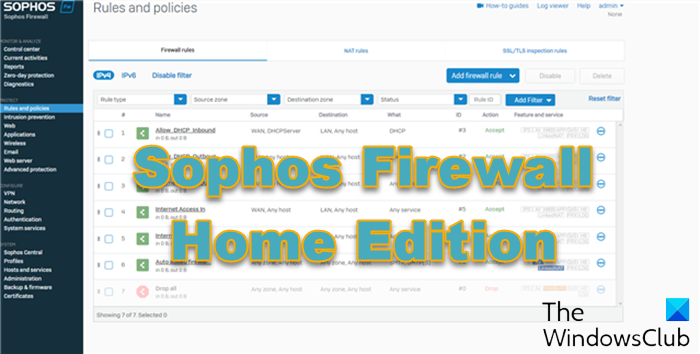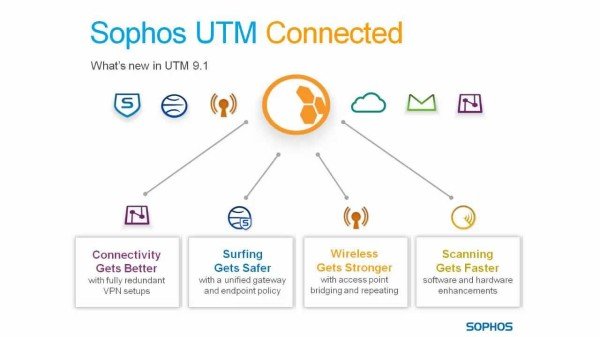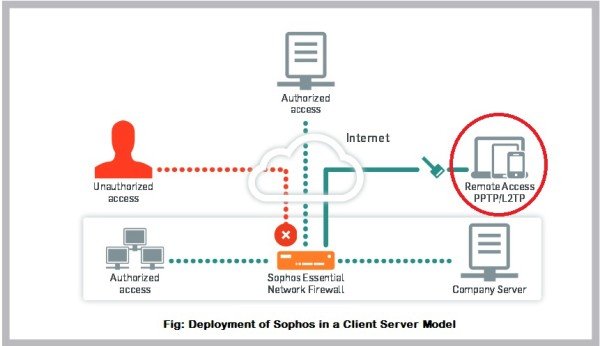There are plenty of free firewalls available for home networks. With Windows 11/10, you do not need a separate firewall, as the built-in Windows Firewall is good. For extra protection, you can turn on the firewall in your router/modem. But if you think you need an even better firewall to protect your data, Sophos is a release you may want to consider. The article checks out the features of Sophos Firewall Home Edition Free (earlier called Sophos Free Essential Network Firewall).

Sophos Firewall Home Edition Free for Windows PC
One of the editions is ready to use VMware Virtual Appliance and the second edition is a software application.
You will need a dedicated computer to use the Sophos firewall application. By dedicated, I mean that the computer will have its Windows installation files rewritten. That won’t spoil your network configuration and will use Sophos as a virtual hardware firewall. This type of configuration ensures maximum protection against unauthorized attempts to get into your network.

System Requirements for Sophos Free Firewall Application Edition
- 1.5+ GHz processor (dual core+ recommended)
- 1 GB RAM (2GB strongly recommended)
- 60 GB hard disk
- Bootable CD-ROM
- Two or more network cards
The last requirement of having two network cards implies it will be used as a client-server network model.
System Requirements for Using Sophos VMware Edition
- 1 GB RAM
- 40 GB IDE or SCSI hard disk drive
- Two or more network cards
This edition is pre-configured to blend into different types of virtual environments.
Installation of Sophos Firewall Home Edition Free
Unlike other software, you won’t get the download link directly on the Sophos website. When you click the download button, you are asked for your name and email ID. The company then sends you a detailed email on how to access, download and install the software. All links are available with the email, including the link for help files.
I feel they use this method to ease the installation process by providing detailed installation information for both the application and VMware edition of Sophos – any to get your email ID!
In both cases, you must upload a license file after installation before Sophos starts protecting your computer network.
In the case of the app version, you will have to create a bootable CD using the link to the image file they gave you in the email. It would be best if you booted with that CD to launch a walkthrough to guide your installation. This extra step, I suppose, is to ensure further safety during installation. In other words, it boots via CD to avoid malware tampering with the installation.

Essential Features of Sophos Free Network Firewall
The top two features of Sophos are explained below:
- Location-based Denial: The firewall provides you an option to create your own rules. While configuring Sophos, you can configure it to reject packets originating from a certain country or a list of countries.
- Encrypted Access To Your Office: Wherever you are, if there is an internet connection, you can use it to connect securely to your Office’s private network. This is actually a VPN providing encryption so that your data is not accessible to others at the place you are – for example, airport or a coffee house.
Among other features is network monitoring. This monitors how the different devices function and provides you with data in the form of charts for better understanding. From these charts, you can determine if any app leaks or uses more resources than required.
On a negative note, the Sophos firewall cannot be used on a P2P network. I do not think many of us still use P2P but, for those who share a common connection without having to keep a central computer running all the time, Sophos is not the answer. On the other hand, as shown in the image above, the deployment can be done as a client-server model. The computer containing Sophos is connected to the external world while all other devices are connected to that computer.
Take a look at: Sophos Home Free Antivirus.
Is this version permitted to be use in business or home network only? One page say it for home use while the other say that it for business use
I suppose it is a single computer license that can be used on only one computer – whether at home or at business. And since it is client-server model, entire network will be secured… irrespective of whether you install it at business or at home.